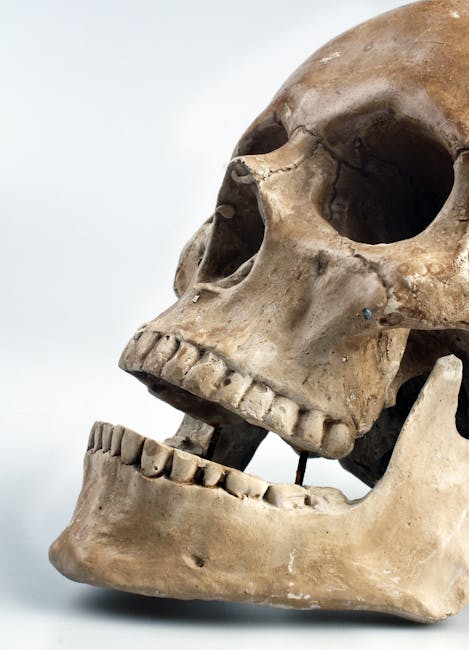Are you tired of feeling pain every time you hit the gym? Are you starting to think that maybe lifting weights isn’t worth the constant ache in your elbow? Well, don’t throw in the towel just yet! We’re here to shed some light on the mysterious world of weightlifting elbow injuries. Don’t worry, we’ll explain everything in terms even your muscle-bound bicep can understand. So grab a protein shake and let’s dive in!
Contents
- 1 1. The Anatomy of the Elbow: A Brief Overview
- 2 The Anatomy of the Elbow: A Brief Overview
- 3 2. Common Types of Elbow Injuries in Weightlifting
- 4 3. Risk Factors and Prevention Strategies for Elbow Injuries
- 5 4. Diagnosis and Treatment Options for Elbow Injuries
- 6 5. Rehabilitation and Recovery: Getting Back to Weightlifting Safely
- 7 Don’t Let Your Elbow Hold You Back!
1. The Anatomy of the Elbow: A Brief Overview
The Anatomy of the Elbow: A Brief Overview
Let’s face it – elbows aren’t the most glamorous body part. They’re not as attention-grabbing as a six-pack or a pair of toned legs. But don’t let their lack of sexiness fool you – elbows are vital for everyday tasks like lifting a cup of coffee or giving your best friend a hug.
In a nutshell, elbows are hinge joints that connect the upper arm bone to the forearm bone. But that’s not all – there are actually three bones that make up the elbow: the humerus, radius, and ulna. Together, they form a complex system of tendons and ligaments that allow for flexion, extension, and rotation of the arm.
- Humerus: The long bone in the upper arm that connects to the shoulder socket and extends down to the elbow
- Radius: The shorter bone in the forearm that connects to the thumb side of the wrist and rotates around the ulna to help with arm movement
- Ulna: The longer bone in the forearm that connects to the pinky side of the wrist and acts as a hinge for the arm’s movement
So next time you find yourself taking your trusty elbows for granted, give them a little love and appreciation. After all, without them, you wouldn’t be able to enjoy some of life’s simplest pleasures (like high-fiving your BFF after a job well done).

2. Common Types of Elbow Injuries in Weightlifting
Common Types of Elbow Injuries in Weightlifting
Have you ever experienced a sharp pain in your elbow while curling that dumbbell? If so, you might have suffered from one of the common elbow injuries in weightlifting. Here are some of the peskiest injuries that can make you want to throw that weight across the gym.
- Elbow Tendinitis: A.k.a. “tennis elbow,” this injury causes inflammation and pain in the tendons that attach to the outside of your elbow. It’s caused by repetitive gripping and twisting motions, which basically means that you’re doomed if you’re a heavy lifter. Time to invest in a hand gripper!
- Golfer’s Elbow: This type of tendinitis affects the tendons on the inside of your elbow, causing pain and tenderness. Despite the name, this injury isn’t limited to golfers – weightlifters are just as susceptible. So don’t be fooled by the name, this injury doesn’t give you an excuse to hit the links instead of the gym.
- Ulnar Collateral Ligament (UCL) Injury: This is a fancy way of saying that you’ve damaged the ligament on the inside of your elbow. It’s a common injury among pitchers, but weightlifters can also suffer from it, especially if they’re going heavy on the tricep exercises. Don’t ignore the pain and hope it’ll just go away – trust me, it won’t.
So, those are the three most common elbow injuries in weightlifting. But don’t let that scare you away from hitting the weights. Just make sure you’re using proper technique, warming up properly, and not going too heavy too soon. And if you do feel that familiar twinge in your elbow, don’t be afraid to take a break and let it heal. After all, a few days of rest is better than months of pain and nagging injuries.
3. Risk Factors and Prevention Strategies for Elbow Injuries
First off, let’s face it – no one wants to deal with an elbow injury. Whether you’re a professional athlete or just a casual gym-goer, an elbow injury can quickly put a damper on your daily routine. Let’s take a closer look at some of the common risk factors that can lead to an elbow injury.
– Poor form when lifting weights: Trying to lift too much weight or using improper form when performing exercises like bicep curls or tricep pushdowns can put extra strain on your elbow joints.
– Repetitive actions: Activities that involve repetitive arm motions, such as throwing a baseball or tennis serve, can put a lot of strain on your elbow joints over time.
– Overuse: Overusing your elbow by performing the same activity over and over again without giving your muscles and joints time to rest can increase your risk of developing an elbow injury.
So what can you do to prevent elbow injuries? Let’s take a look at some strategies that can help keep your elbows in tip-top shape.
– Warm up properly: Before you start any workout or activity, take a few minutes to warm up your elbow joints by performing some light stretches and range-of-motion exercises.
– Stick to proper form: When performing any type of exercise, make sure that you’re using proper form and technique to reduce your risk of injury.
– Take breaks: If you’re performing an activity that involves repetitive arm motions, take frequent breaks to allow your muscles and joints to rest.
Remember, taking care of your elbows now can help prevent injuries down the line. So go forth and exercise safely!
4. Diagnosis and Treatment Options for Elbow Injuries
Are you feeling a little twinge in your elbow when you pick up your morning coffee? Did you have a little too much fun in your last game of tennis? Fear not, because there are plenty of diagnosis and treatment options for elbow injuries!
First up, let’s talk about diagnosis. A doctor might take some x-rays or even a CT scan to determine the extent of your injury. They might also ask you to do some simple exercises to gauge your range of motion. And, if you’re lucky, they might even give you a cool sling to wear around!
Now onto the fun stuff – treatment options! If you have a minor injury, you might be able to take care of it with some rest and ice. But if you’re like me and have a tendency to go all out, you might need some more help. Physical therapy, braces, and even surgery are all viable options. And if you’re really feeling adventurous, you can always try some holistic remedies like acupuncture or meditation. Hey, stranger things have worked!
In the end, the most important thing is to listen to your body and take care of yourself. Don’t push yourself too hard, and always seek professional help if you’re not sure what’s going on. And, of course, make sure to incorporate some elbow-specific stretches and exercises into your routine. Because who doesn’t want bionic elbows?
5. Rehabilitation and Recovery: Getting Back to Weightlifting Safely
Alright folks, so you’ve had a little injury setback. Maybe you went a little too hard on those deadlifts, or maybe you pulled a muscle trying to flex in the mirror. Either way, you’re here now and you want to get back to weightlifting safely. Here are a few tips to help you do that:
- Start slow and steady: Look, we know you miss the weights. But jumping straight back in at your old routine after an injury is like trying to sprint before you’ve learned to walk. Take your time, gradually building up to your previous weights and number of reps.
- Stretch it out: It’s important to warm up and stretch before hitting the weights. Not just because it helps prevent injuries, but because it’s the perfect time to show off your best yoga poses and pretend you’re a graceful swan.
- Listen to your body: This one is important. If you feel any sharp pain or discomfort while lifting, stop immediately. You’re not going to impress anyone by pushing through the pain, and you’ll only make your injury worse.
So, there you have it. Follow these tips and you’ll be back to lifting heavy in no time. Just remember, slow and steady wins the race. And if someone asks why you’re lifting a 5-pound dumbbell when you used to deadlift 300 pounds, just tell them you’re focusing on your technique. That’s what we call a power move.
Don’t Let Your Elbow Hold You Back!
We hope you’ve enjoyed learning about elbow injuries in weightlifting, or at least that you’ve skimmed through it on your way to more important things like bench pressing or squatting. Remember: prevention is key! Pay attention to your technique, warm up properly, and don’t be afraid to ask for help if something doesn’t feel quite right. And most importantly, keep on lifting! Because what’s a little elbow pain compared to the joy of being swole?








Leave A Comment